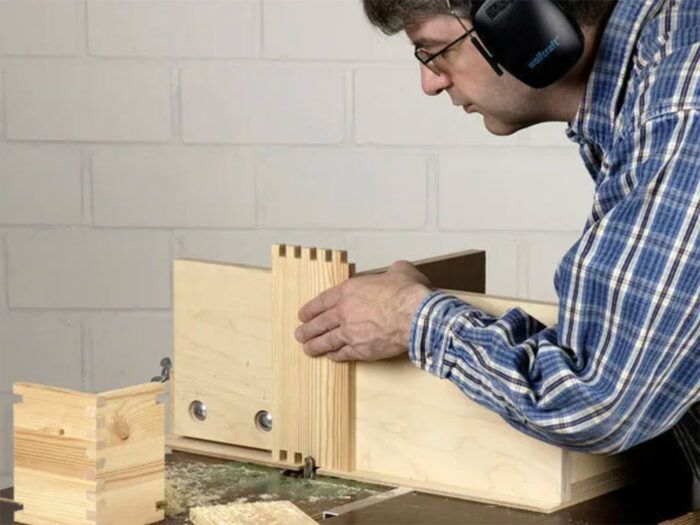All About Box Joints
The box joint, or finger joint, interlocks two boards at a corner.

The box joint, sometimes called a finger joint, interlocks two boards at a corner. It is similar to a dovetail (with the grain going in the same direction), however, instead of angled tails and pins, box-joint fingers are straight.
The Basics:
• Sizes and proportions: Make it attractive and strong.
• Handcut or by machine? Jigs and fixtures are essential.
Sizes and proportions
Generally, this joint looks best (and is strongest) when the thickness of the fingers is equal to half the thickness of the material. For example, if the stock used is 3/4 in. thick, the fingers should be 3/8 in. thick. Because of the interlocking fit of the fingers and the amount of long-grain glue surface created, the finger joint is probably as strong as the through dovetail (joint). This joint has a clean, utilitarian appearance that makes it perfect for kitchen containers, office bins, or shop tool boxes.
By hand or machine
It’s true that the finger joint can be cut by hand. But, the most efficient and most common method is to machine the entire joint. Both halves are nearly identical, except for the first and last fingers of each half. This carefully calibrated offset allows the fingers to entwine themselves. For a clean joint, measures should be taken to prevent tearout at the base of each finger; the best way is to scribe a line across the base of the fingers. After assembly, the scribe line can be left visible or sanded away.
There are commercial jigs and fixtures available that can cut the joint with amazing precision, but the same results can be achieved with a simple shopmade appliance. The finger joint would be a good warm-up for anyone aspiring to cut dovetails.
Fine Woodworking Recommended Products

Olfa Knife

Veritas Standard Wheel Marking Gauge

Freud Super Dado Saw Blade Set 8" x 5/8" Bore








Log in or create an account to post a comment.
Sign up Log in